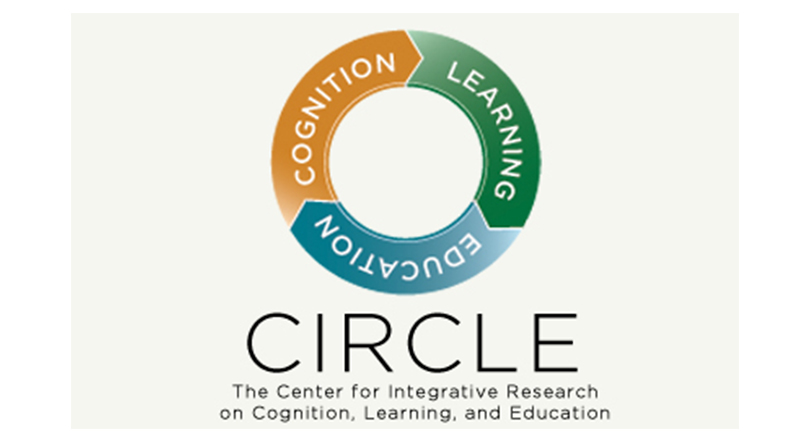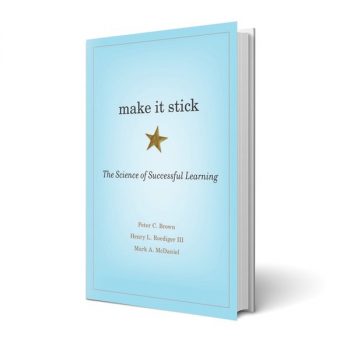Taking It From the Lab to the Classroom
Our work on cognition and education has focused on various domains of cognitive psychology that have strong educational and instructional implications. Enumerated below are several lines of current research – Study Strategies, Category Learning, Test-enhanced Learning, and Individual Differences – aimed at informing educators and students alike how they can improve their own teaching and learning. For more applied work, such as classroom studies in chemistry and biology, see the Center for Integrative Research on Cognition, Learning, and Education (CIRCLE) which Mark McDaniel co-directs. He has also co-authored Make it Stick, a book for general audiences aimed at communicating how people can apply evidence-based cognitive psychological principles to enhance daily function.
STUDY STRATEGIES
Students employ a wide variety of study strategies. We are interested in examining the efficacy of strategies that students often use as well as proposing novel study strategies that can promote learning. Recently we have published a review paper regarding the evidence of five popular study strategies – Rereading, Marking (e.g., highlighting and underlining), Note-taking, Outlining, and Flashcards – and illuminated when they are (and when they are not) effective (Miyatsu, Nguyen, & McDaniel, in press).
In collaboration with Dr. Elizabeth marsh at Duke University, we are currently working on a project that is funded by the National Science Foundation looking at how writing essays on educationally relevant materials can enhance reading comprehension in both open- and closed-book contexts. Given how often essays are assigned in classroom settings, it is important to illuminate further how and when writing them may lead to increased understanding.
TEST-ENHANCED LEARNING
One particular type of study strategy that has received much attention in the past couple of decades is retrieval practice. Retrieving information from memory, thus taking a test, has potent benefits on learning as established by the work here at Washington University (see also Roediger’s and McDermott’s work) and elsewhere (see Bjork’s and Marsh’s work).
Recent and current topics we investigated in this domain include how test-enhanced learning can be implemented effectively in a large college classroom (Trumbo, Leiting, McDaniel, & Hodge, 2016; see Nguyen & McDaniel, 2015 for a review), the interaction between testing and subsequent re-studying (McDaniel, Bugg, Liu, & Brick, 2015), the effect of retrieval practice on meta-memory (Little & McDaniel, 2015), and efficacy of retrieval practice when combined with other study strategies (the keyword mnemonic: Miyatsu & McDaniel, under review; judgment of inference: Nguyen & McDaniel, 2016).
CATEGORY LEARNING
Category learning is ubiquitous in science education. From learning how to identify different types of plants in botany courses to distinguishing between various types of rocks in geology, category learning is a major part of most STEM disciplines. In collaboration with Robert Nosofsky at Indiana University, we are currently working on a project funded by the National Science Foundation examining ways to optimize the instruction of rock categories. The topics we investigated under this grant include, investigating the efficacy of exemplar-based computational modeling in accounting rock category learning data (Nosofsky, Sanders, & McDaniel, under review), conducting multi-dimensional modeling to better understand the structure of rock categories (Nosofsky, Sanders, Meagher, & Douglas, 2017), examining the benefits of incorporating specific-level category information on learning of broad categories (Miyatsu & McDaniel, in preparation; Nosofsky, Sanders, Gerdom, Douglas, McDaniel, 2017) as well as provision of verbal descriptions of key perceptual features of to-be-learned categories (Miyatsu, Gouravajhala, & McDaniel, under review).
We also have a diverse interest in other domains of category learning, such as individual differences in the establishment and dynamics of category learning strategies using both artificial stimuli (Gouravajhala, Wahlheim, & McDaniel, in preparation) and naturalistic stimuli (Gouravajhala & McDaniel, in preparation). Additional research focuses on how small picture presentation enhance some natural category learning (Miyatsu, DeYoung, Kasoff, & McDaniel, in preparation).
INDIVIDUAL DIFFERENCES
Our lab has long been interested in individual differences that determine learning as well as their predictive power (for a critical review of popular ‘learning styles’ see Pashler, Bjork, McDaniel & Rohrer, 2009; 2015). One individual difference metric that we have been investigating recently is whether learners try to memorize examples or abstract the underlying rule when learning concepts or categories. This example-memorization or rule-abstraction tendency is stable (McDaniel, Cahill, Robbins, & Wiener, 2014) and can predict course grades in college chemistry (Frey, Cahill, & McDaniel, 2017). We have devised a novel test that can illuminate this learning tendency (Little & McDaniel, 2015a) and investigated potential differences in category learning tendencies between young and older adults (Wahlheim, McDaniel, & Little, 2016; see Little & McDaniel, 2015b for a review on this topic).
Structure building is the ability to build a “cohesive mental representation or ‘structure’ of any event” (Gernsbacher, Varner, & Faust, 1990). It requires the identification and integration of main ideas, as well as inhibition of irrelevant information. Individual differences in structure building have been shown to predict course performance in psychology (Maki & Maki, 2002) and biology, as well as better high school GPAs and higher SAT verbal scores (Arnold, Daniel, Jensen, McDaniel, & Marsh, 2016). We (including graduate student Reshma Gouravajhala) are currently investigating the underlying mechanisms of individual differences in structure building, with the hope of creating laboratory and classroom interventions that help mitigate these differences.

